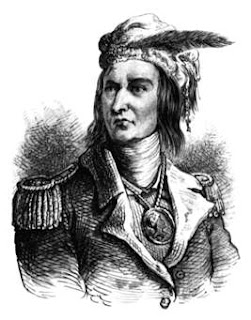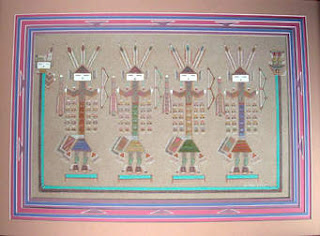Lawyer received his name from Chief Joseph. Lawyer was negotiating treaties, giving away Nez Perce land. Chief Joseph would say He talked to much and gave away land that didn't belong to him. Washington territorial governor Isaac Stevens had designated Lawyer to talk for the Nez Perce.
Old Joseph and Young Joseph argued against the treaty. They lead the antitreaty Nez Perce. However he negotiated another treaty giving away even more land. However, as treaties were broken, he traveled to Washington D.C. to protest. Lawyer died before the great march.
 Joseph the Younger
Joseph the Younger, known as Chief Joseph attempted to retain the freedom of his people. However they saw their land taken away. The treaty of Walla Walla in 1855 was the beginning of this. However the Nez Perce retained 50 percent of their land, Whites were not yet interested in the barren rugged territory.
However when significant amounts of gold were discovered this changed. At first the Nez Perce hoped to supervise. However the encroachments became more numerous. The federal government proposed a further reduction of 75 percent. Old Joseph refused. This created a split in the people. Lawyer negotiated the reduction. The split was between treaty and nontreaty bands (about a third). Old Joseph refused to leave the horse breeding, raising area of Wallowa Valley. At this time Old Joseph passed away, and Chief Joseph continued the fight. Old Joseph told him to never sell the bones of his ancestors, who were buried in the land. At first President Grant chose to divide the area between the Nez Perce and settlers. However he changed in mind a couple years later, and offered the Nez Perce land in Indian Territory in Oklahoma. Thus they would vacate their land in Washington and Idaho. Troops under General O.O. Howard were sent to remove the Indians. A council was held, and the decision was made to move to Canada (where Sitting Bull had previously fled) rather than accept the U.S. demands. Howard was determined, and thus began the Nez Perce War, which would be appropriately named, the Nez Perce Chase. This was a chase of 111 days, with the federals pursuing them with orders to deliver them to Oklahoma.
Hostilities began when a Nez Perce, Wahlitits killed for white men, avenging the death of his father. This was the first white killed by Nez Perce for a generation. The hostilities against the federals began with an engagement against cavalry. A peace truce was fired on by a volunteer militia traveling with the cavalry. This lead to a brief skirmish in which 34 cavalry were killed, and the Nez Perce gained valuable rifles and arms. As a result units from all over the United States came to assist in the maneuvers.
Ollokot served as chief strategist. He and other chiefs,
Looking Glass,
Toohoolhoolzote, preferred to fight. However Chief Joseph continued a retreating, fleeing strategy. They wre able to flee for 1170 miles, through Washington, Oregon, Idaho, Wyoming and Montana. There were sharp engagements, but each time they managed to escape, leaving many behind. The New Perce were weakened, while the federals continued to receive reinforcements, including General Nelson Miles (later of Wounded Knee fame) with 600 calvary. Thirty miles before the Canadian border the Nex Perce stopped to recruit, thinking they had met their goal. This allow Miles' cavalry to out flank them. They held out for several days, but finally, after council Chief Joseph determined to surrender. Toohoolhoolzote, Ollokot and Looking Glass were dead. Through interpreter Joseph said to Generals Howard and Miles, "Hear me, my chiefs. I am tired; my heart is sic and sad. From where the sun now stands I will fight no more forever. The Nez Perce were herded into box cars and shipped to Oklahoma. Chief Joseph and many of the warriors were first taken to a prisoner of war camp in Kansas. Many more died, not use to the climate. They were finally allowed to return to the Colville Reservation in Washington, but never to their priced territory. Joseph would also say, "You might as well expect the rivers to run backward as that any man who was born free should be content when penned up and denied liberty."
Looking Glass served as war leader for the fleeing Nez Perce. Looking Glass advised against war, however when hostilities came. He lead the entire operation, and went slowly and confidently at first as they encountered no resistance. However the soldiers caught them, inflicting many casualties. Looking Glass was held responsible and relieved of his position. He became the last casualty of the war.
Toohoolhoolzote was chosen to speak for the Nez Perce at the peace meeting with General Howard before the war. The federals were demanding that the Nez Perce leave their land within 30 days. Toohoolhoolzote contended this did not give them time to prepare, or to properly see to their herds. When Howard would not budge, he looked at the general and said, he had "simiakia" and would not go. In other words he had Indian pride which the general had offended, and would not concede. Toohoolhoolzote had advocated peace. However he was killed at the Battle of Bear Paw.
White Bird, along with Old Joseph had refused to sign the peace treaties offered by the federals. He fled with Chief Joseph. He was a skilled marksman which helped the fleers in many situations. He along with twenty other Nez Perce leaders and 200 total did make it to Canada where they joined Sioux Chief Sitting Bull. White Bird did not return from Canada like Sitting Bull, and was the victim of murder, when as a medicine man he could not cure two dying Indian patients.
Yellow Wolf was an important warrior in the Nez Perce conflict. He grew up in the Wallowa Valley in Oregon, and did not want to leave. His mother was Chief Joseph's cousin and he was of Chief Joseph's band. He was too young to attend the peace treaties. He fled with Chief Joseph, and was one who did not surrender. He made it to Canada, and a few years later decided to return to Wallowa. However he discovered that this was not possible. He surrendered to the Nez Perce agency, and was transported to Oklahoma. Rampant disease led to his being allowed to return to the Colville Reservation where he lived until his death in 1935.
Ollokot was the younger brother of Chief Joseph. He lead the young warriors. Remarkably, the Nez Perce only had 200 warriors in their group, about 600 total. Ollokot lead the fight at Battle of White Bird Canyon where the defeated a much larger contingent. He also aided their escape at the Battle of Big Hole as his young warriors held down a large military group while the main body fled. At the Battle of Canyon Creek his warriors again paralyzed General Howard by stealing his mules. However Ollokot was killed during the first day of fighting at Bear Paw. Chief Joseph ackowledged his brother when he surrendered. "He who lead the young men is dead."










































